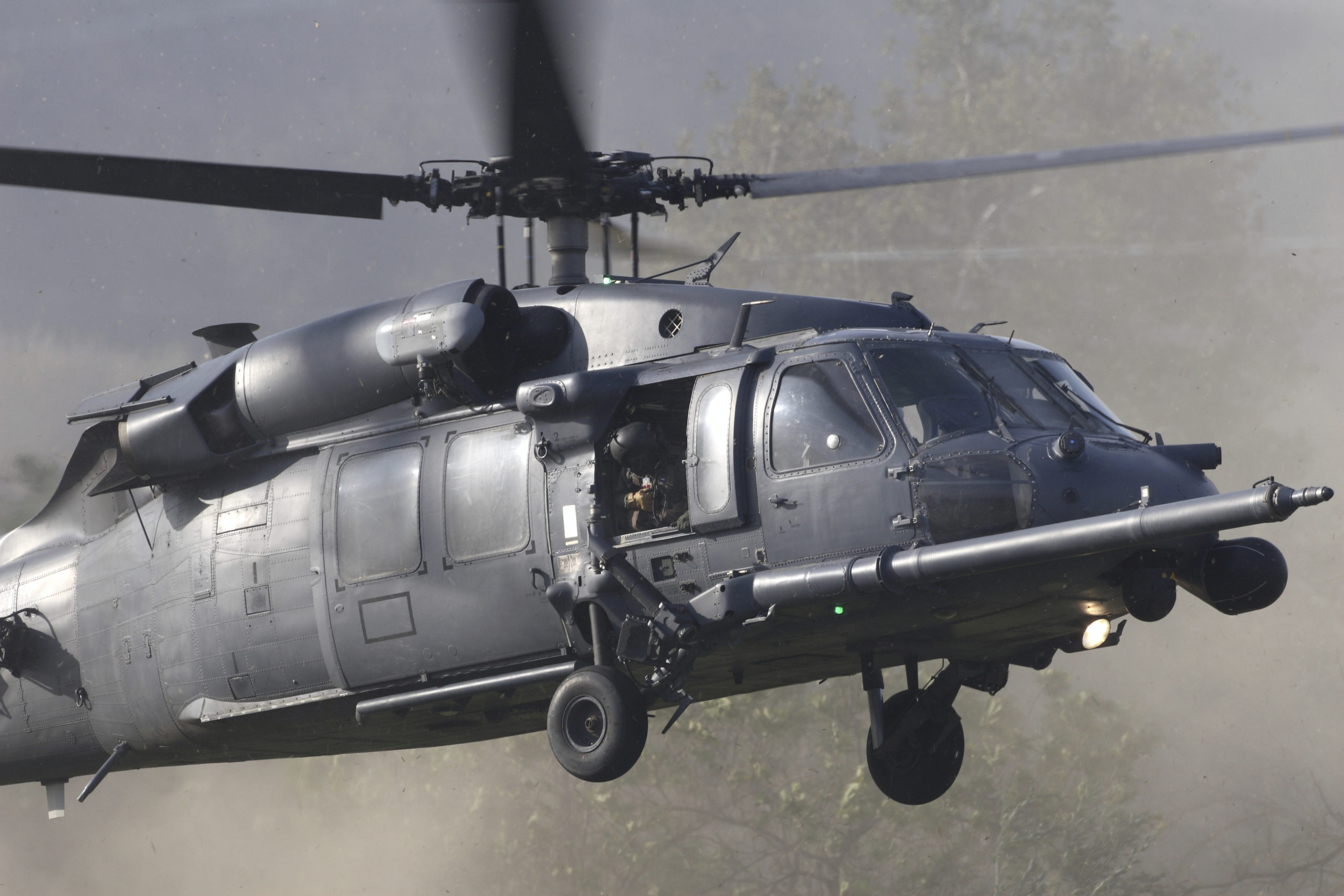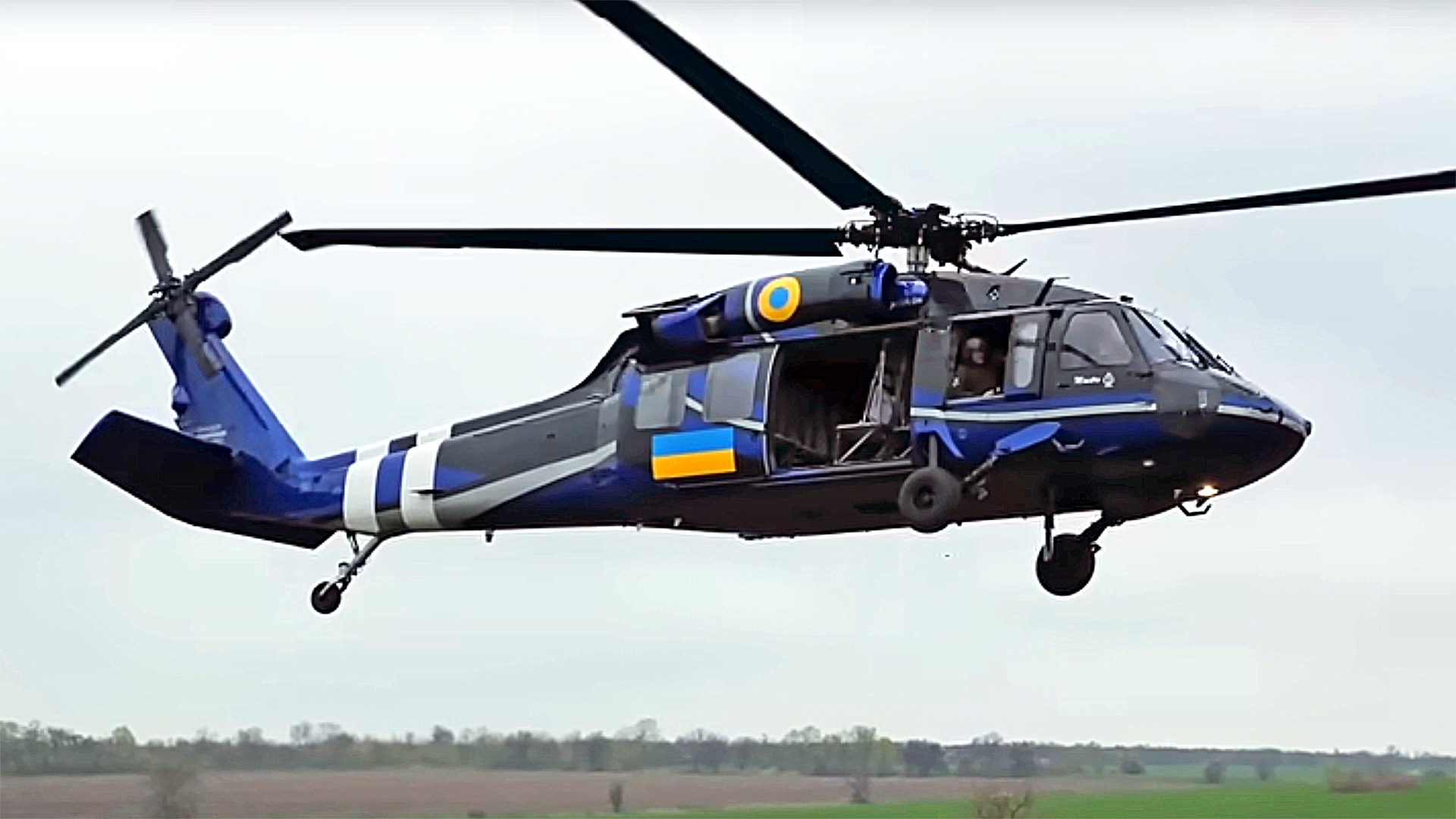Recognizing the UH60: The Ultimate Military Helicopter Experience
The UH-60 Black Hawk helicopter stands for a critical development in armed forces aeronautics, incorporating robust engineering with complex functional capacities. Its design satisfies a variety of goals-- from troop transport to medical discharge-- showing its flexibility across varied combat scenarios. As we check out the history, specs, and technical advancements of the UH-60, it comes to be obvious that its duty fit contemporary armed forces techniques is both significant and substantial. This conversation welcomes a better examination of just how this amazing aircraft remains to affect modern war dynamics.
History of the UH-60
Emerging from the need for a functional energy helicopter throughout the late 1960s, the UH-60 Black Hawk was created by Sikorsky Airplane Company in feedback to the U.S. Military's need for a modern battleground transport helicopter. The layout process started in 1972, culminating in its first flight in October 1974. The Black Hawk was engineered to change the aging UH-1 Iroquois, likewise referred to as the "Huey," which had been a staple of Military aviation given that the Vietnam War.

Throughout the years, the Black Hawk has undergone countless upgrades, preserving its significance in contemporary armed forces operations. Its success has actually resulted in the growth of various versions, serving multiple branches of the U. UH60.S. armed forces and allied forces worldwide, developing the UH-60 as a cornerstone of armed forces aeronautics background
Key Attributes and Requirements
The UH-60 Black Hawk is differentiated by its sophisticated layout and robust specifications, which contribute to its adaptability on the field of battle. This multi-role helicopter includes a twin-engine setup, powered by 2 General Electric T700-GE-701C engines, supplying an optimal output of 1,800 shaft horse power each. This powerful engine setup allows the Black Hawk to get to a maximum speed of roughly 183 knots (211 miles per hour) and a solution ceiling of 19,000 feet.
The airplane's composite rotor blades provide outstanding lift and ability to move, while its four-blade major blades system boosts security (UH60). The Black Hawk is geared up with advanced avionics, including a digital cabin and night vision capacities, making sure effective operations in varied conditions. Its cabin can suit approximately 11 troops or bring approximately 8,000 extra pounds of cargo, making it ideal for different logistical demands
The UH-60's modular layout enables easy upkeep and upgrades, making certain durability and adaptability in developing armed forces requirements. Furthermore, its advanced survivability functions, such as crashworthy seats and shield, enhance crew safety throughout objectives. On the whole, the UH-60 Black Hawk represents a considerable advancement in military aeronautics innovation.
Operational Functions and Objectives
Flexibility is a hallmark of the UH-60 Black Hawk, allowing it to perform a vast selection of operational roles and goals throughout numerous army environments. Mostly made for troop transport, the Black Hawk can bring approximately 11 soldiers and is often made use of in air attack procedures, allowing rapid insertion and extraction of ground pressures in contested locations.

In addition to army transportation, the UH-60 is skilled at clinical emptying (MEDEVAC) goals. Equipped with advanced clinical devices and employees, it can promptly evacuate wounded soldiers from the field go to the website of battle, substantially enhancing survival prices in crucial situations. The helicopter likewise plays a vital role in logistics sustain, delivering products, ammo, and tools to forward operating bases in ascetic settings.
In Addition, the Black Hawk works as a system for special procedures objectives, consisting of reconnaissance and straight action. Its ability to operate in various terrains and its low-flying capacities make it a vital asset for systems carrying out hidden operations.

Technical Improvements
Development in aviation technology has dramatically enhanced the abilities of the UH-60 Black Hawk, guaranteeing its significance in contemporary armed forces procedures. The helicopter is equipped with innovative avionics systems that supply pilots with superior situational understanding, consisting of multi-functional screens, boosted GPS, and cutting-edge surface awareness systems. These attributes make it possible for accurate navigation and objective execution, also in tough atmospheres.
Moreover, the assimilation of digital interactions systems allows for rapid and protected info exchange in between systems, helping with worked with operations. The UH-60's upgraded rotor systems and composite products contribute to enhanced efficiency, using greater speed, agility, and reduced upkeep prices.
Additionally, advancements in weapon systems, such as the capability to release precision-guided munitions, enhance the Black Hawk's function in fight scenarios. The helicopter's ability to support medical look at more info emptying goals is also reinforced by brand-new clinical tools and innovations, ensuring efficient client care en route.
Last but not least, continuous enhancements in stealth technology and noise reduction systems even more solidify the UH-60's efficiency in concealed procedures, permitting it to run in aggressive regions with a decreased possibility of detection. Collectively, these technological advancements underscore the Black Hawk's withstanding prestige in military aviation.
Effect On Modern Warfare
Boosted capabilities of the UH-60 Black Hawk have greatly influenced contemporary warfare approaches and tactics. Its convenience in troop transport, medevac operations, and reconnaissance duties has redefined the operational landscape for military pressures. The helicopter's ability to run in diverse settings, from metropolitan settings to rugged surfaces, permits better tactical flexibility, making it possible for commanders to adjust quickly to transforming field of battle problems.
The UH-60's innovative avionics and communication systems boost situational understanding, helping with real-time knowledge sharing and sychronisation amongst devices. This capacity is vital in contemporary asymmetric warfare, where rapid decision-making can identify the end result of interactions. The helicopter's ability for quick insertion and removal of unique operations pressures has ended up being a hallmark of contemporary army projects, emphasizing speed and accuracy.
Furthermore, the Black Hawk's assimilation with unmanned airborne systems and various other innovative modern technologies symbolizes a shift in the direction of multi-domain procedures. As a result, the UH-60 not just acts as an important possession in traditional conflicts yet additionally plays an essential function in counterinsurgency and peacekeeping missions, emphasizing its anonymous enduring impact on modern military teaching and the evolution of war.
Conclusion
The UH-60 Black Hawk represents a peak of army aeronautics, characterized by its convenience, progressed engineering, and durable style. Constant technological advancements and improvements have additional solidified the Black Hawk's calculated relevance, enabling quick response and flexibility in diverse combat scenarios.

Development in aviation innovation has dramatically improved the abilities of the UH-60 Black Hawk, ensuring its relevance in modern-day armed forces procedures.The UH-60 Black Hawk stands for a peak of army aviation, defined by its versatility, advanced engineering, and durable layout.